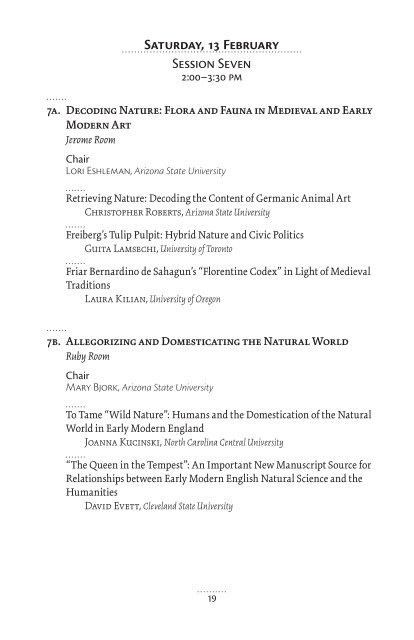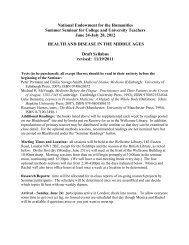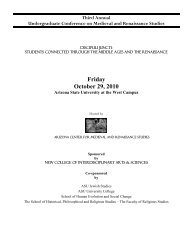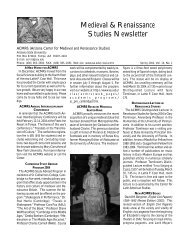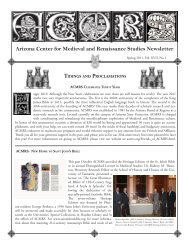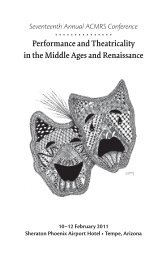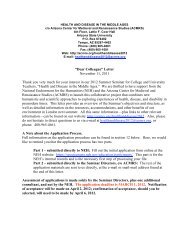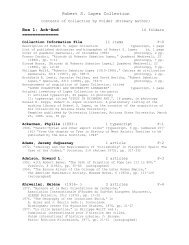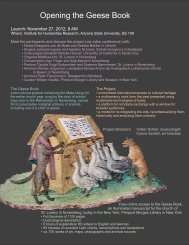PDF version - Arizona Center for Medieval and Renaissance Studies
PDF version - Arizona Center for Medieval and Renaissance Studies
PDF version - Arizona Center for Medieval and Renaissance Studies
Create successful ePaper yourself
Turn your PDF publications into a flip-book with our unique Google optimized e-Paper software.
Saturday, 13 February<br />
Session Seven<br />
2:00–3:30 pm<br />
7a. Decoding Nature: Flora <strong>and</strong> Fauna in <strong>Medieval</strong> <strong>and</strong> Early<br />
Modern Art<br />
Jerome Room<br />
Chair<br />
Lori Eshleman, <strong>Arizona</strong> State University<br />
Retrieving Nature: Decoding the Content of Germanic Animal Art<br />
Christopher Roberts, <strong>Arizona</strong> State University<br />
Freiberg’s Tulip Pulpit: Hybrid Nature <strong>and</strong> Civic Politics<br />
Guita Lamsechi, University of Toronto<br />
Friar Bernardino de Sahagun’s “Florentine Codex” in Light of <strong>Medieval</strong><br />
Traditions<br />
Laura Kilian, University of Oregon<br />
7b. Allegorizing <strong>and</strong> Domesticating the Natural World<br />
Ruby Room<br />
Chair<br />
Mary Bjork, <strong>Arizona</strong> State University<br />
To Tame “Wild Nature”: Humans <strong>and</strong> the Domestication of the Natural<br />
World in Early Modern Engl<strong>and</strong><br />
Joanna Kucinski, North Carolina Central University<br />
“The Queen in the Tempest”: An Important New Manuscript Source <strong>for</strong><br />
Relationships between Early Modern English Natural Science <strong>and</strong> the<br />
Humanities<br />
David Evett, Clevel<strong>and</strong> State University<br />
19


